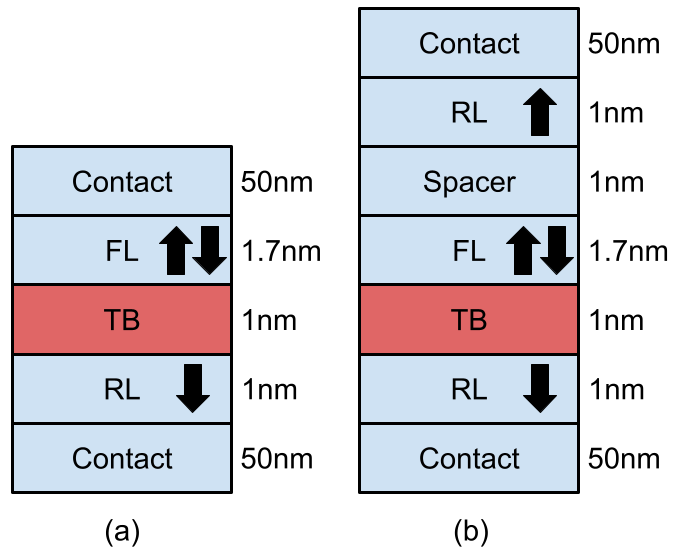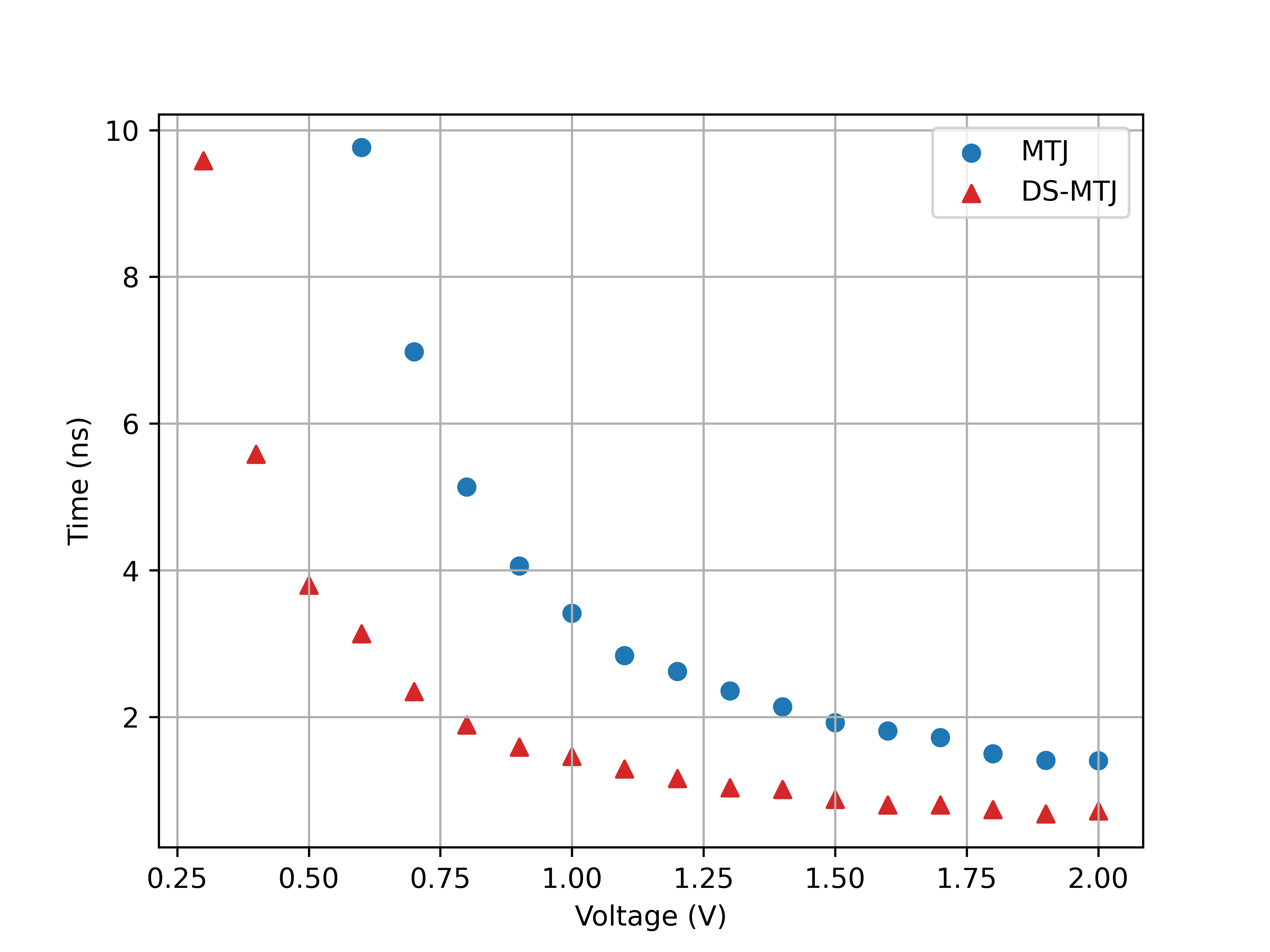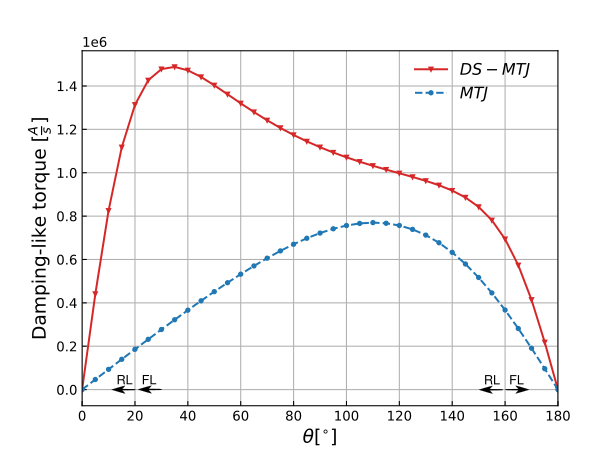 |
|
||||
BiographyWilton Jaciel Loch was born in 1998 in Presidente Getúlio, Brazil. He received his Bachelor degree in Computer Science from Santa Catarina State University in 2019. In 2020 he enrolled in the Master's program in Applied Computing from the same university, with research focused on communication algorithms for high performance computing (HPC). He received his Master's degree in 2021 and in October he joined the Institute for Microelectronics to perform research on HPC methods for micromagnetic simulations of non-volatile magnetic memory devices. |
|||||
Double Reference Layer STT-MRAM Structures with Improved Performance
Spin-transfer torque magnetoresistive random-access memory (STT-MRAM) is an emerging technology set to potentially replace conventional flash memory, DRAM, and slow SRAM due to its non-volatility and increasingly improved power-consumption, high storage density, fast writing speed, strong endurance, and long data retention. As shown in Fig. 1a, STT-MRAM devices are composed of a ferromagnetic reference layer (RL) with fixed magnetization orientation, an insulator tunnel barrier (TB), and a ferromagnetic free layer (FL). The conjunction of these three layers forms a magnetic tunnel junction (MTJ).
Currently, one of the challenges faced by STT-MRAM devices is their miniaturization to achieve increased storage densities. The main path toward this goal is the reduction of the bit cell size, which is primarily determined by the contact dimensions necessary to provide the switching currents. Thus, reducing the current, and likewise voltage, required to switch between the magnetization states also grants a transitively proportional reduction in the cell size.
Recently published works explored structures with additional layers aiming at a reduction of the switching currents and, consequently, cell sizes. The most promising of these structures is the double spin-torque magnetic tunnel junction (DS-MTJ), which adds a non-magnetic spacer (SP) and a reference layer on top of the three regular ones, as shown in Fig. 1b.
We have employed our finite-element-based simulator to analyze the switching characteristics of this structure and compare it with the regular three-layered MTJ. Fig. 2 shows, for both structures, the required time for the FL magnetization to switch from anti-parallel to parallel. When the same voltage is applied, the switching time of the DS-MTJ structure is consistently smaller than the time of the regular MTJ, with the average reductions ranging between 1.5x and 2.5x. When analyzing Fig. 2 on similar switching times, the required voltages for the DS-MTJ are about 2 times lower than the voltages for its counterpart, in accordance with experimental results.
Fig. 3 shows the damping-like torque angular dependence for the two structures, when the FL magnetization rotates on the zx-plane. The sum of torque values across all angles for the DS-MTJ is about 2.12 times larger than that of the MTJ, showing that the 2 times reduction of required switching voltage is correspondingly accompanied by a very similar increase in the damping-like torque acting on the FL.

Fig. 1: Schematics of MTJ structures: (a) Regular three-layer MTJ. (b) DS-MTJ with five layers.

Fig. 2: Time required for the free layer magnetization to switch from anti-parallel to parallel with different applied voltages.

Fig. 3: Damping-like torque dependence on the magnetization angle around the y-axis for MTJ and DS-MTJ.


